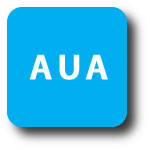ORLANDO, FL USA (UroToday.com) - Litholink Corporation has recently developed a solid-phase assay, cystine capacity, that is thought to be a more reliable estimate of stone-forming potential than cystine concentration. To date, the recommended capacity target of > 150 mg/L has not been directly correlated with clinical stone recurrence.
 To investigate the relationship between urinary cystine capacity and clinical stone activity, the authors performed a prospective evaluation of 35 cystinuric patients. Stone activity (quiescent vs active) was correlated with cystine capacity during follow up. Stone activity was defined as an increase in size of existing stones, development of new stones, or passage or intervention for stones not previously seen on imaging. The values obtained for cystine capacity ranged from -470 mg/L to 193 mg/L. The highest cystine capacity value associated with a stone event was 126 mg/L. Of the patients who were able to achieve a capacity level > 100, the longest period of sustaining this level was 48 months, and this occurred in 2 patients. Cystine concentration was significantly lower for quiescent urine collections (236 ± 113 mg/L vs 322 ± 168 mg/L, p < 0.01), while cystine capacity was significantly greater for quiescent urines (62.8 ± 59.0 mg/L vs -22.8 ± 120.7 mg/L, p < 0.01), respectively, demonstrating that urinary cystine capacity is associated with clinical stone activity. ROC analysis performed for cystine capacity identified an area under the curve of 0.74. No patients formed stones with capacity > 126 mg/dl (specificity 100%) but 71% of urines with capacity < 126 mg/L had no stone activity (sensitivity 17.5%).
To investigate the relationship between urinary cystine capacity and clinical stone activity, the authors performed a prospective evaluation of 35 cystinuric patients. Stone activity (quiescent vs active) was correlated with cystine capacity during follow up. Stone activity was defined as an increase in size of existing stones, development of new stones, or passage or intervention for stones not previously seen on imaging. The values obtained for cystine capacity ranged from -470 mg/L to 193 mg/L. The highest cystine capacity value associated with a stone event was 126 mg/L. Of the patients who were able to achieve a capacity level > 100, the longest period of sustaining this level was 48 months, and this occurred in 2 patients. Cystine concentration was significantly lower for quiescent urine collections (236 ± 113 mg/L vs 322 ± 168 mg/L, p < 0.01), while cystine capacity was significantly greater for quiescent urines (62.8 ± 59.0 mg/L vs -22.8 ± 120.7 mg/L, p < 0.01), respectively, demonstrating that urinary cystine capacity is associated with clinical stone activity. ROC analysis performed for cystine capacity identified an area under the curve of 0.74. No patients formed stones with capacity > 126 mg/dl (specificity 100%) but 71% of urines with capacity < 126 mg/L had no stone activity (sensitivity 17.5%).
The results suggest the goal for capacity should be lower than previously stated, unfortunately few patients, however, demonstrated the ability to maintain a high level of capacity over time. Determination of a more clinically appropriate goal may prevent additional toxicity with higher doses of thiol-binding agents.
Presented by Justin I. Friedlander, MD at the American Urological Association (AUA) Annual Meeting - May 16 - 21, 2014 - Orlando, Florida USA
Dallas, TX USA
Written by Zhamshid Okhunov, MD, University of California (Irvine), and medical writer for UroToday.com


